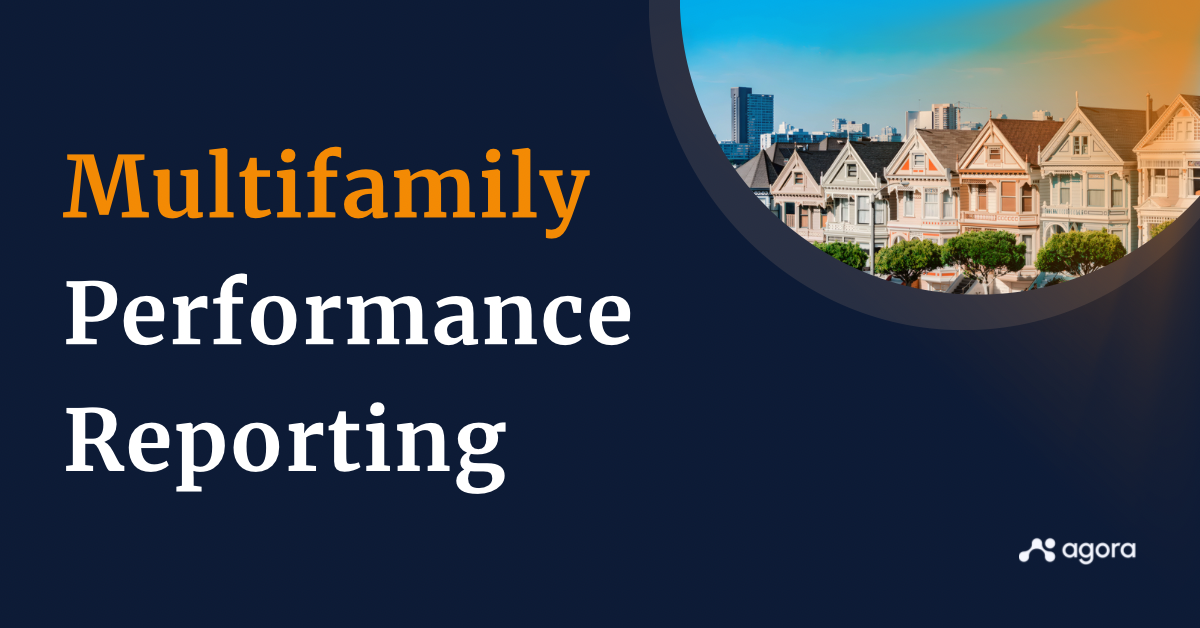As a multifamily property owner or investor, you know that the numbers tell the story. And the story those numbers tell can make a massive difference to the bottom line of any property and how it’s managed.
In this article, we’ll define what multifamily performance reporting is and why it’s so important, identify some key metrics of the reports, provide some best practices for effective multifamily performance reporting, and more.
What is multifamily performance reporting and why is it important?
Multifamily performance reporting refers to the process of collecting and analyzing data on the operational and financial performance of multifamily properties. It involves tracking various key performance indicators (KPIs) and generating reports that provide insights into the property’s overall performance and financial health.
The importance of multifamily reporting lies in its ability to provide property owners, investors, and property managers with valuable information to make informed decisions and optimize the profitability and efficiency of their multifamily assets.
Key metrics of multifamily performance reporting

An old saying is relevant to performance reporting: “Inspect what you expect”. To do that, you need to understand and track certain key metrics of multifamily performance reporting:
| Metric | Benefit |
| Occupancy Rate | Indicates the property’s ability to attract and retain tenants. |
| Rental Income | Provides the total amount of revenue generated from rental units within a given timeframe. |
| Effective Gross Income (EGI) | Reflects the property’s actual income-generating potential. |
| Net Operating Income (NOI) | Indicates the property’s profitability before accounting for debt service and capital expenditures. |
| Cash Flow | Provides an indication of the property’s ability to generate positive cash flow and cover expenses. |
| Average Rental Rates | Helps evaluate the property’s positioning within the market. |
| Economic Occupancy | Provides a comprehensive view of the property’s revenue potential. |
| Turnover Rate | Reflects tenant satisfaction, property management effectiveness, and potential leasing challenges. |
| Capitalization Rate (Cap Rate) | Provides a measure of the property’s return on investment and is commonly used in property valuation. |
These key metrics, along with others specific to the property and market, help stakeholders assess the financial performance, risk profile, and overall health of multifamily properties for better decision-making and performance optimization.
Benefits of multifamily performance reporting
Multifamily performance reporting offers several key benefits to property owners, investors, and property managers. Some of these benefits include:
Enhanced decision making
By analyzing metrics such as occupancy rates, rental income, and expenses, stakeholders can make data-driven decisions regarding pricing, marketing strategies, capital investments, and operational improvements.
Improved property management
Performance reporting allows property managers to monitor a property’s operational and financial performance. It helps identify areas of improvement, optimize leasing strategies, manage expenses, and enhance tenant satisfaction. This leads to more efficient property management and increased profitability.
Investor confidence and transparency
For properties with multiple investors or stakeholders, performance reporting fosters transparency and builds investor confidence. It demonstrates the property’s financial health, occupancy rates, and overall operational efficiency, providing investors with clear insights into the performance of the investment.
Financial planning and budgeting
Property owners and managers can use the data to forecast future income, estimate expenses, allocate resources effectively, and develop realistic budgets. This promotes financial stability and enables effective resource management.
Multifamily performance reporting offers numerous benefits that enable stakeholders to optimize the performance and profitability of multifamily properties in a competitive market.
Challenges of multifamily performance reporting
While multifamily performance reporting provides valuable insights and benefits, it is not without its challenges. Three challenges commonly faced in this important reporting include:
| Challenge | Description |
| Data collection and accuracy | Gathering accurate and comprehensive data from various sources can be challenging. Property managers often rely on manual data entry, which can lead to errors and inconsistencies. |
| Privacy and security concerns | Ensuring data privacy, security, and compliance with regulations such as the General Data Protection Regulation (GDPR) or the California Consumer Privacy Act (CCPA) can be challenging as they entail robust data protection measures. |
| Communication and stakeholder engagement | Presenting complex data clearly and concisely in a way that aligns with the stakeholders’ expectations requires effective communication skills and having an understanding of their specific needs. This can be challenging. |
Collaboration between property management teams, data analysts, and technology providers can help overcome these challenges and enhance the effectiveness of multifamily reporting.
Best practices for effective multifamily performance reporting
To ensure effective multifamily performance reporting, consider the following best practices:
- Define clear objectives: Determine the key metrics and benchmarks that align with your investment strategy and property management objectives.
- Use key performance indicators (KPIs): Use common KPIs like occupancy rates, rental income, net operating income (NOI), cash flow, tenant turnover, and maintenance costs when making decisions to reduce uncertainty.
- Timely and regular reporting: Determine the appropriate reporting frequency based on your stakeholders’ needs. Monthly or quarterly reports are common.
- Tailor reports to stakeholders: Investors may require more detailed financial data while property managers may be interested in operational metrics. Make sure your reports provide the right information to the right people.
- Contextualize the data: Include qualitative information in the reporting, such as market conditions, property-specific events, or operational changes that may have impacted the performance. This will provide stakeholders with more context within which to understand the returns.

Conclusion
Soliciting feedback from stakeholders to identify areas for improvement and incorporating their suggestions will help you continuously refine your multifamily reporting processes. Staying updated on industry best practices, technological advancements, and regulatory changes may also impact performance reporting.










